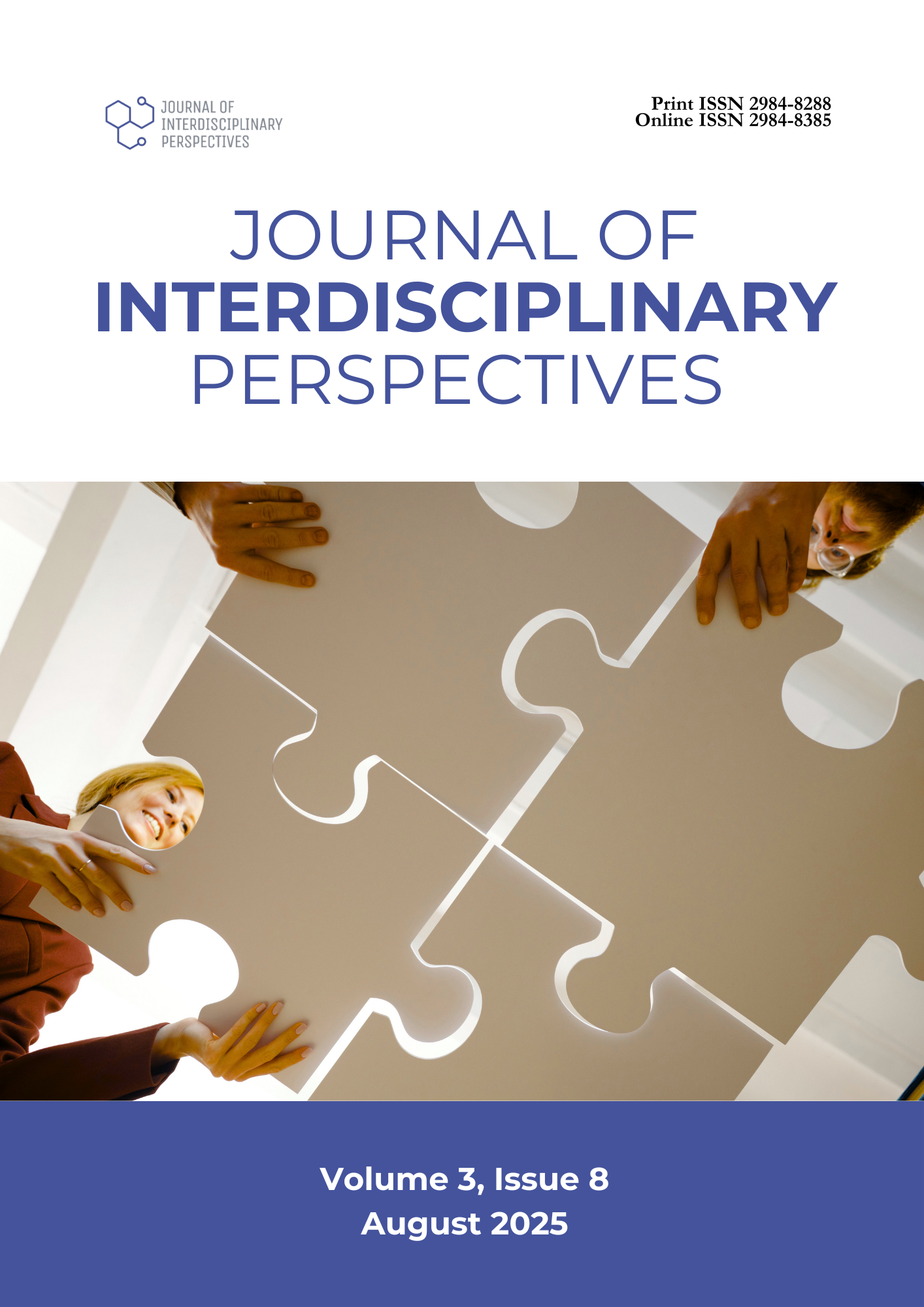Comparative Performance of Rice Husk Ash and Seashell-Based Binder as an Eco-Friendly Alternative to Commercial Cement Stabilizers
DOI:
https://doi.org/10.69569/jip.2025.368Keywords:
Cement stabilizer, Compressive strength, Durability, Rice husk ash, SustainabilityAbstract
This study evaluates the potential of rice husk ash (RHA) blended with seashell powder as an eco-friendly alternative to commercial cement stabilizers. It employed a quasi-experimental design using a 1-meter height drop test and a 60-kg compressive strength test. The experiment involved two groups: a control group using commercial cement and an experimental group using a blend of RHA, seashell powder, sand, and a reduced amount of Portland cement. The results indicated no statistically significant difference in structural performance between the two groups, with comparable scores in both durability and compressive strength tests. The use of ASTM C140 guidelines ensured testing reliability. However, the study was limited to a single mix ratio due to resource constraints. Future research should test varying proportions and include additional durability parameters such as water absorption. The findings support the viability of RHA-seashell blends as partial replacements for traditional cement, contributing to sustainable construction practices.
Downloads
References
Adesina, A. (2020). Recent advances in the concrete industry have been made to reduce its carbon dioxide emissions. Environmental Challenges, 1, 100004. https://doi.org/10.1016/j.envc.2020.100004
Alcala, M. D. (2009). Plastic, seashells, cement composite material. St. Paul University Dumaguete Library.
Ali, N., Abbas, J., Anwer, M., Khan, S., & Anjum, M. (2015). The greenhouse gas emissions produced by cement production and their impact on the environment: A review of global cement processing. International Journal of Research (IJR), 2(2), 488–500. https://tinyurl.com/82jx95kh
Aliyu, M. K., & Karim, A. K. (2016). The effect of cement and rice husk ash on the compressive strength and leachability of artificially contaminated stabilized sediment. ARPN Journal of Engineering and Applied Sciences, 11, 5365–5371. https://tinyurl.com/372pb5mz
Anastas, P., & Eghbali, N. (2010). Green chemistry: Principles and practice. Chemical Society Reviews, 39(1), 301–312. https://doi.org/10.1039/B918763B
Barcelo, L., Kline, J., Walenta, G., & Gartner, E. (2014). Cement and carbon emissions. Materials and Structures, 47(6), 1055–1065. https://doi.org/10.1617/s11527-013-0114-5
Christensen, R. M. (2012). Mechanics of composite materials. Courier Corporation.
Hu, L., He, Z., & Zhang, S. (2020). Sustainable use of rice husk ash in cement-based materials: A detailed study of rice husk ash as an eco-friendly substitute in cement production. Discover Applied Sciences, 6(11), 1–22. https://doi.org/10.1016/j.jclepro.2020.121744
Indumathi, M., Nakkeeran, G., Roy, D., Gupta, S. K., & Alaneme, G. U. (2024). Innovative approaches to sustainable construction. Journal of Cleaner Production, 422, 00111–2. https://doi.org/10.1007/s42247-024-00111-2
Jeffry, L., Ong, M. Y., Nomanbhay, S., Mofijur, M., Mubashir, M., & Show, P. L. (2021). Greenhouse gas utilization: A review. Fuel, 301, 121017. https://doi.org/10.1016/j.fuel.2021.121017
Miller, S. A., Cunningham, P. R., & Harvey, J. T. (2019). Rice-based ash in concrete: A review of past work and potential environmental sustainability. Resources, Conservation and Recycling, 146, 416–430. https://doi.org/10.1016/j.resconrec.2019.03.001
Musa, A. (2010). Studies on the effect of rice husk ash as cement admixture. Nigerian Journal of Basic and Applied Sciences, 5. https://doi.org/10.4314/njbas.v17i2.49917
Nault, W. H., & Gonzalez, A. B. (2014). The World Book Encyclopedia (Vol. 3, pp. 343–344). Scott Fetzer Company.
Nie, S., Zhou, J., Yang, F., Lan, M., Li, J., Zhang, Z., & Sanjayan, J. G. (2022). Analysis of theoretical carbon dioxide emissions from cement production: Methodology and application. Journal of Cleaner Production, 334, 130270. https://doi.org/10.1016/j.jclepro.2022.130270
Ruslan, H. N., Muthusamy, K., Syed Mohsin, S. M., Jose, R., & Omar, R. (2022). Oyster shell waste as a concrete ingredient: A review. Materials Today: Proceedings, 48(4), 713–719. https://doi.org/10.1016/j.matpr.2022.02.008
Shi, C., Jiménez, A. F., & Palomo, A. (2011). New cements for the 21st century: The pursuit of an alternative to Portland cement. Cement and Concrete Research, 41(7), 750–763. https://doi.org/10.1016/j.cemconres.2011.03.016
Singh, S. B., Munjal, P., & Thammishetti, N. (2015). Role of water/cement ratio on strength development of cement mortar. Journal of Building Engineering, 4, 94–100. https://doi.org/10.1016/j.jobe.2015.09.003
Sulaiman, T. A., Ejeh, S. P., Lawan, A., & Kaura, J. M. (2022). Strength properties assessment of sesame straw ash blended with rice husk ash as an alternative for cement in concrete. Nigerian Journal of Engineering, 29(1), 58–63. https://tinyurl.com/fr3fdx8s
Wang, Z., Li, M., Shen, L., & Wang, J. (2022). Incorporating clay as a natural and eco-friendly partial replacement for cement to reduce carbon emissions in peat stabilization: An experimental investigation. Construction and Building Materials, 353, 128901. https://doi.org/10.1016/j.conbuildmat.2022.128901
Yu, L., Liu, H., Diabate, A., Qian, Y., Sibiri, H., & Yan, B. (2020). Assessing influence mechanism of green utilization of agricultural wastes in five provinces of China through farmers’ motivation-cognition-behavior. International Journal of Environmental Research and Public Health, 17(10), 3381. https://doi.org/10.3390/ijerph17103381
Zhang, Z., Yang, F., Liu, J. C., & Wang, S. (2020). Eco-friendly high strength, high ductility engineered cementitious composites (ECC) with substitution of fly ash by rice husk ash. Cement and Concrete Research, 137, 106200. https://doi.org/10.1016/j.cemconres.2020.106200
Downloads
Published
How to Cite
Issue
Section
License
Copyright (c) 2025 Journal of Interdisciplinary Perspectives

This work is licensed under a Creative Commons Attribution-NonCommercial 4.0 International License.








